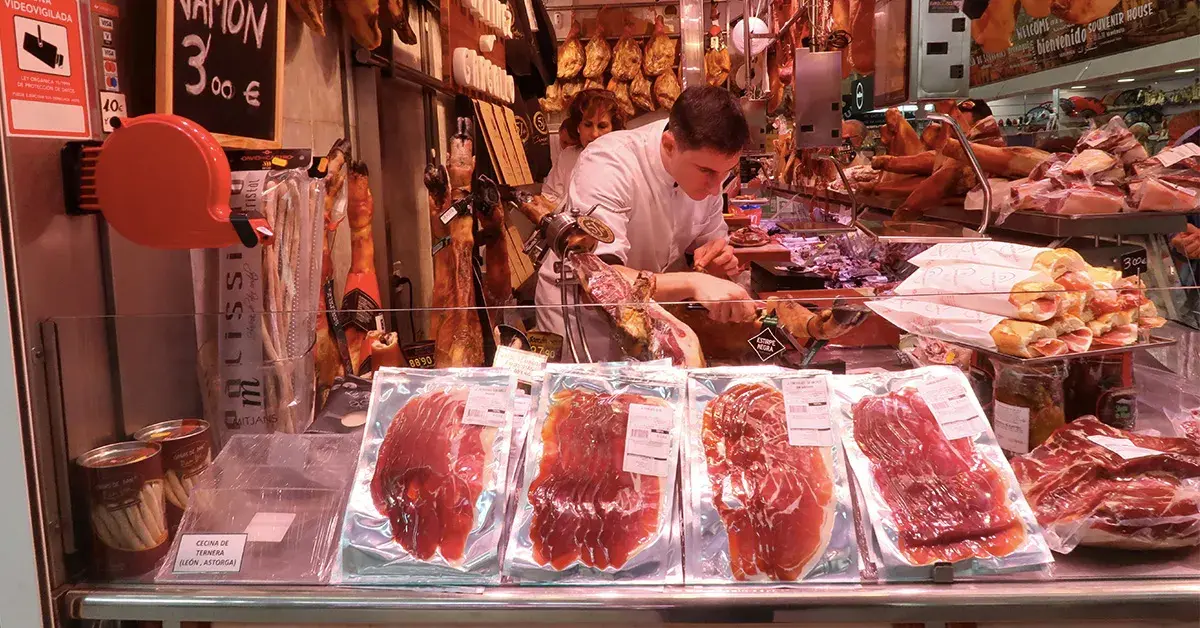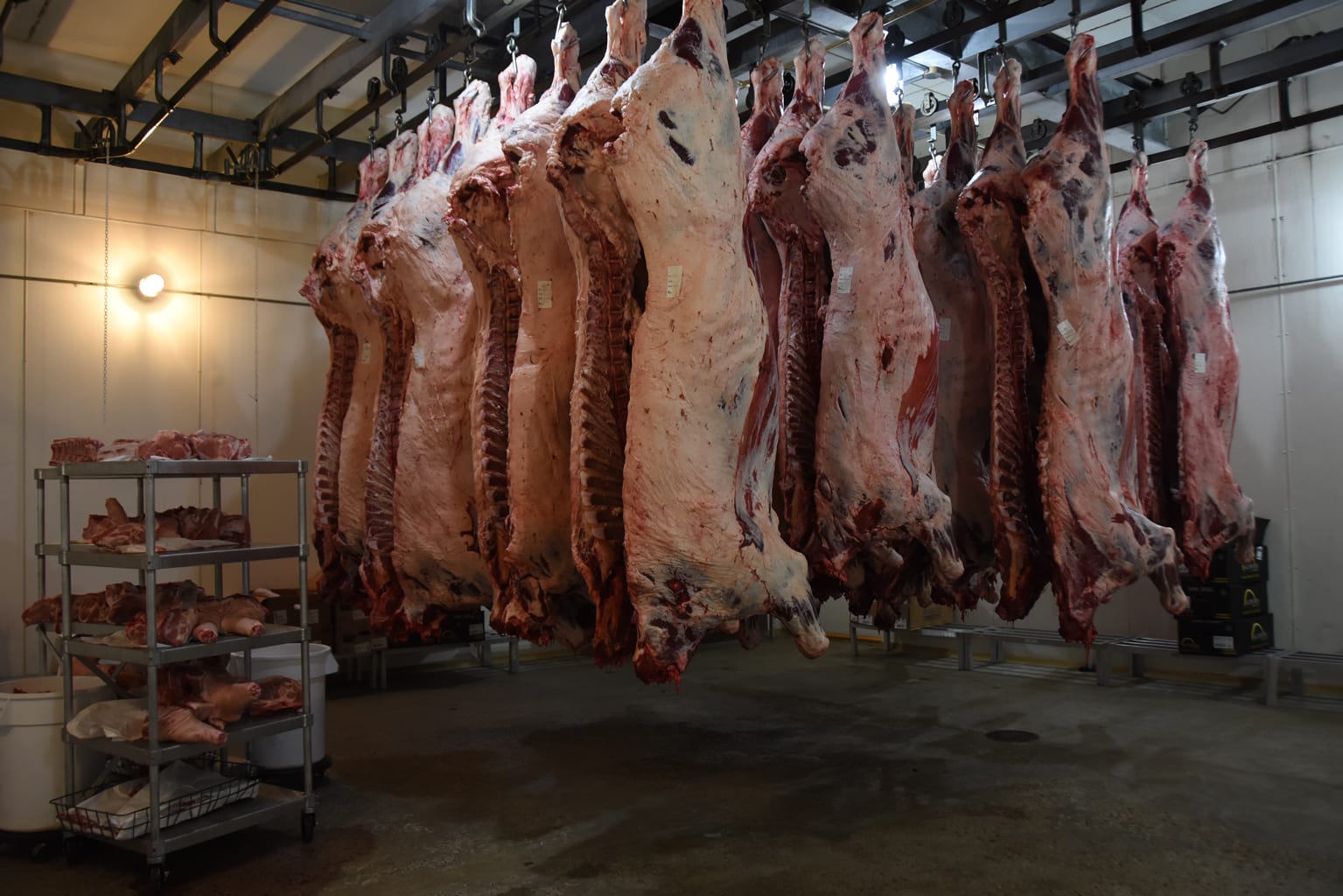Get the very best Deals on Fresh Meat at Bagley Farms Meat Market Edwardsville IL
Get the very best Deals on Fresh Meat at Bagley Farms Meat Market Edwardsville IL
Blog Article
Reveal the Art of the Butcher's Cut in a Modern Meat Market
In the ever-evolving landscape of modern-day meat markets, the butcher's cut has transcended its conventional origins, combining olden workmanship with modern techniques. What genuinely establishes the contemporary butcher apart is their ability to forge a deeper connection between customers and the beginnings of their meat.
Development of Butchery Methods
The development of butchery techniques mirrors a rich tapestry of innovation and adaptation driven by improvements in modern technology, modifications in consumer demand, and a much deeper understanding of meat science. Historically, butchery was a craft passed down with generations, with methods sharpened over centuries to maximize yield and taste. Nonetheless, the commercial revolution ushered in mechanization, changing typical methods and making it possible for large-scale processing.
The mid-20th century saw butchery methods even more fine-tuned by scientific understandings right into muscular tissue biology and meat aging, boosting both tenderness and taste. Technologies like vacuum cleaner product packaging and refrigeration expanded product shelf-life, allowing butchers to branch out offerings and enhance high quality control. This duration additionally noted the surge of customized tools, such as band saws and meat slicers, which increased precision and effectiveness in meat handling.

Electronic systems currently assist in monitoring animal provenance and optimizing cuts to meet details customer choices. Furthermore, a rebirth in artisanal butchery has arised, mixing traditional abilities with modern understanding to provide to consumers seeking ethical and sustainable meat alternatives.
Understanding Meat Cuts
Understanding the ins and outs of meat cuts is vital for both butchers and customers looking for high quality and value. For butchers, specific cuts show skill and respect for the craft, ensuring marginal waste and optimal yield.

Comprehending muscular tissue make-up is critical; muscles used extra frequently by the animal tend to be harder and are best suited for slow cooking methods, while less-used muscles, like those found in the loin, are extra tender and ideal for grilling or roasting. Experience with these distinctions empowers consumers to make informed choices, enhancing their culinary endeavors.
Picking High Quality Meat
Choosing the best meat entails even more than simply choosing a visually enticing item from the screen. The art of picking high quality meat calls for a critical eye and expertise of specific sites attributes that represent quality and quality.
Second of all, think about the marbling, which over at this website refers to the white flecks of fat within the muscular tissue. Appropriate marbling is a vital indicator of inflammation and flavor, as it thaws throughout cooking, improving the meat's juiciness. Bear in mind, higher marbling often correlates with superior top quality cuts, such as USDA Prime.
Structure is another important element; meat ought to really feel strong to the touch, not slimed or overly soft. Additionally, be mindful of the aroma. Fresh meat ought to have a clean, neutral smell, cost-free from any kind of sour or repulsive smells.
Combining Cuts With Cooking Techniques

Conversely, harder cuts like brisket and chuck roast are rich in collagen, which damages down into gelatin when prepared slowly. These cuts are perfect for braising or slow roasting, enabling the meat to tenderize gradually and establish deep, intricate tastes. In a similar way, cuts such as short ribs read this and pork shoulder prosper with slow-cooking approaches, where expanded cooking times change their durable appearances right into delicious recipes.
Lamb shanks and oxtail, which call for long term food preparation to tenderize, are ideal candidates for stewing or slow simmering. These methods coax out abundant, hearty flavors while keeping dampness. By recognizing the one-of-a-kind attributes of each cut, chefs and home cooks alike can elevate their culinary productions, guaranteeing each meal is both satisfying and unforgettable.
The Butcher's Role Today
Navigating the evolving landscape of the contemporary meat market, the butcher's function today expands beyond simple prep work of cuts. Contemporary butchers are culinary craftsmens, educators, and advocates for sustainable practices.
Along with crafting exact cuts, butchers currently engage directly with customers, offering cooking advice and tailoring options to fit individual demands and choices. Their knowledge in meat aging, marbling, and flavor accounts encourages consumers to make informed decisions, improving their cooking experiences. This personalized service exemplifies the butcher's progressing duty as a trusted advisor in the kitchen area.
Additionally, butchers are pivotal in minimizing waste, using whole animals to produce varied items such as sausages and supplies. This comprehensive method not only appreciates the pet but also lines up with contemporary sustainability objectives. By doing this, the modern butcher symbolizes both custom and advancement, adjusting to an ever-changing market while maintaining the artistry and integrity of their craft.
Conclusion
The contemporary butcher's craft elaborately weaves standard strategies with modern-day innovations, highlighting lasting methods and honest sourcing. Proficiency in recognizing diverse meat cuts and top quality indicators empowers butchers to offer informed recommendations, straightening details cuts with optimum food preparation methods. This know-how not only elevates culinary experiences however likewise reinforces the link in between customers and the origins of their food. By recognizing historical practices while welcoming contemporary needs, the butcher's role stays crucial in today's sophisticated meat market (bagley farms meat market edwardsville il).
Report this page